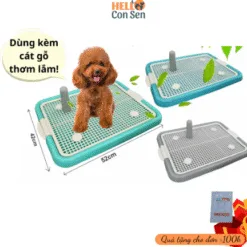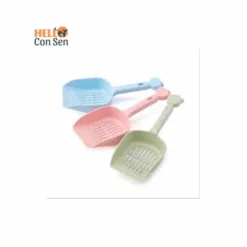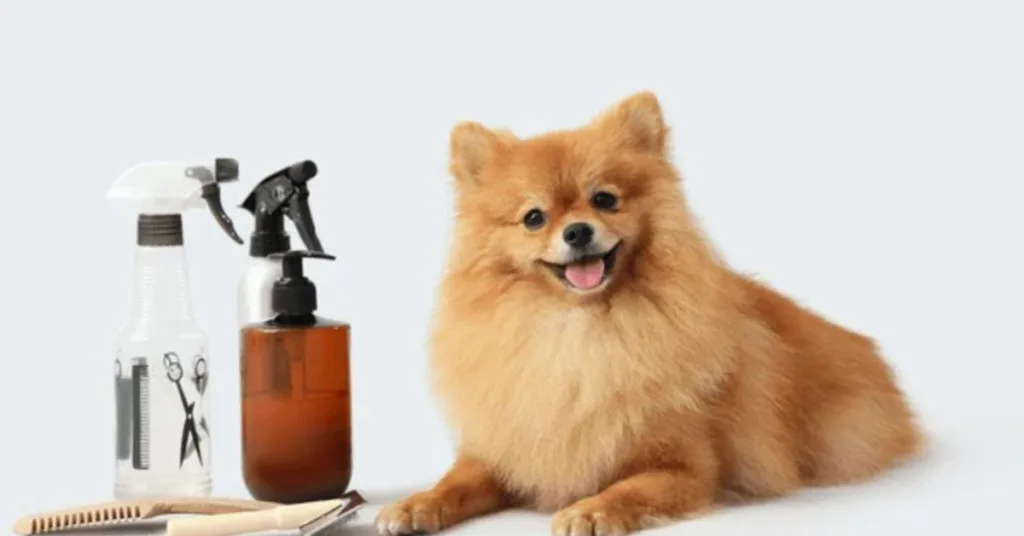New
Essential Hygiene Tips: Keeping Dogs and Cats Clean and Fresh
Understanding the Importance of Pet Hygiene
When people think about the health of their beloved dogs and cats, they often focus on nutrition, exercise, or medical checkups, yet hygiene is just as vital. Cleanliness not only keeps animals looking their best but also supports strong immunity, prevents parasites, and creates a more comfortable living environment. Dogs and cats naturally groom themselves to some degree, but their efforts are limited. Cats lick their coats to remove loose fur, while dogs may shake off dirt after outdoor play, but neither can prevent bacterial buildup, remove trapped debris, or address skin conditions without human help. Hygiene is therefore a shared responsibility, requiring consistent attention from pet parents.

The link between hygiene and wellness is undeniable. Dirty fur may conceal ticks or fleas, greasy skin can harbor infections, and long nails may alter posture, leading to joint strain. In households where pets interact closely with humans, neglecting hygiene can even transfer allergens or bacteria to family members. Children who hug or sleep beside pets are especially vulnerable, making grooming not just a cosmetic act but also an important element of public health within the home. Clean animals spread less dander, track in fewer pollutants, and smell fresher, contributing to a healthier and happier household overall.
Maintaining hygiene also strengthens the bond between humans and their furry companions. Regular grooming sessions become opportunities for gentle handling, communication, and trust-building. Brushing or bathing can be stressful at first, but with patience and positive reinforcement, pets often learn to associate these routines with affection. The sensory experience of being cared for reassures them, making hygiene practices emotionally nourishing as well. Over time, animals that are groomed regularly tend to display calmer temperaments, since they are comfortable with touch and handling.
Practical Hygiene Routines for Dogs and Cats
The foundation of hygiene lies in regular routines that suit the specific needs of each species. Dogs, for example, often require more frequent baths because of their outdoor adventures, muddy paws, and tendency to roll in questionable substances. Cats, on the other hand, are meticulous self-groomers, so full baths are rarely necessary unless they have long fur, encounter sticky substances, or suffer from skin conditions. Instead, cats benefit more from brushing to remove excess fur and prevent hairballs. For both species, hygiene should be viewed as a collection of ongoing habits rather than occasional interventions.
Bathing is one of the most obvious steps. Using lukewarm water and pet-safe shampoos helps maintain healthy skin while preventing dryness. Medicated shampoos may be prescribed for animals prone to allergies or fungal infections. It is important never to use human products, as they can disrupt the pH balance of pet skin. Dogs with oily coats may need bathing every two to four weeks, while cats may require only seasonal baths. Toweling and air-drying ensure comfort afterward, though long-haired breeds may benefit from blow-drying at low heat to avoid matting.
Brushing is equally crucial, not only for detangling fur but also for distributing natural oils that keep coats shiny and protective. Short-haired breeds may only need weekly brushing, while double-coated or long-haired animals often require daily care. Brushing also provides early detection of parasites or lumps, allowing guardians to address health issues promptly. Nail trimming is another task that is often overlooked. Overgrown claws can curve into paw pads, causing pain and infection. Regular trimming or filing every three to four weeks prevents such complications and maintains proper posture.
Ear cleaning plays a significant role in hygiene, particularly for dogs with floppy ears or cats with wax buildup. Using cotton pads or veterinarian-approved solutions, guardians can gently wipe away debris. Avoid inserting cotton swabs deep into the ear canal, as this risks injury. Dental care is equally important; brushing teeth with pet-safe toothpaste several times per week prevents tartar, gum disease, and bad breath. For pets resistant to brushing, dental chews or water additives can provide supplementary protection. Anal gland expression, while less glamorous, is another hygienic necessity for some dogs prone to blockages or foul odors, and is often best handled by professionals.
Environmental hygiene should not be forgotten. Pets may be groomed meticulously, but if bedding, litter boxes, food bowls, and play areas remain dirty, hygiene efforts lose effectiveness. Washing blankets in hot water, scrubbing litter trays weekly, and disinfecting toys help reduce microbial buildup. Vacuuming regularly also removes fur, dander, and dust mites that can accumulate in carpets and upholstery. A clean environment reduces reinfection from parasites and maintains comfort for both animals and humans.
Enhancing Comfort and Preventing Hygiene-Related Problems
Beyond the basics, hygiene can be elevated through advanced practices that focus on comfort and prevention. For example, paw care is essential in urban environments where pets walk on asphalt treated with chemicals or salt. Rinsing paws after walks removes irritants and prevents ingestion when animals lick themselves. Moisturizing balms formulated for pads help prevent cracking during dry winters or scorching summers. Similarly, protective clothing, such as raincoats or boots, may reduce exposure to dirt, allergens, and pathogens, indirectly supporting hygiene.
Seasonal adjustments are another consideration. During shedding seasons, daily brushing becomes vital to prevent mats and reduce fur accumulation around the home. In humid climates, extra attention should be paid to drying fur thoroughly after baths, as moisture trapped close to the skin can trigger fungal growth. Cold weather, conversely, demands gentle shampoos to avoid stripping oils, since indoor heating can dry skin. Tailoring hygiene to environmental conditions ensures pets remain comfortable year-round.
Behavioral training also enhances hygiene. Teaching dogs to tolerate paw handling or cats to accept brushing without fear reduces stress and improves compliance. Positive reinforcement through treats, praise, or play helps build positive associations. For especially anxious animals, gradual desensitization—introducing grooming tools slowly and in short sessions—makes routines less intimidating. In some cases, professional groomers skilled in animal behavior can manage sensitive pets safely while delivering comprehensive care.

Preventing hygiene-related health problems is perhaps the most important outcome of these practices. Skin infections, hotspots, or fungal outbreaks often begin with neglect. Regular bathing, brushing, and inspection make it easier to detect warning signs before they escalate. Similarly, routine oral hygiene dramatically reduces the risk of periodontal disease, which has been linked to heart, kidney, and liver issues. Ear cleaning prevents painful infections that may cause head shaking, scratching, or hearing loss. By addressing hygiene systematically, guardians safeguard not only immediate comfort but also long-term vitality.
In multi-pet households, hygiene practices play an additional role in preventing cross-contamination. Cats sharing litter boxes or dogs sharing bedding may spread parasites or fungal spores if hygiene is neglected. Establishing individual grooming tools for each pet minimizes the risk of transmission. Quarantine procedures for new pets also help maintain collective health, ensuring that parasites or contagious skin conditions do not spread to established members of the household.
Psychological and Social Dimensions of Hygiene
Hygiene practices extend beyond health and cleanliness; they also affect psychological well-being for both animals and humans. Pets, like people, are sensitive to sensory experiences. When fur is tangled, greasy, or infested with parasites, discomfort manifests in behavior—scratching, licking, or restlessness. By contrast, when animals are regularly bathed, brushed, and kept fresh, they appear calmer, more confident, and more willing to engage in play or cuddling. This is because physical comfort directly shapes emotional stability. Grooming rituals provide soothing stimulation to the skin, which releases endorphins, much like a massage does for people. The act of stroking with a brush or massaging shampoo into the coat reduces stress hormones and encourages relaxation.
From a social perspective, hygiene has enormous implications for human–animal relationships. Clean pets are welcomed into more environments: homes of friends, cafés that allow animals, and even public transport systems. In many cultures, strong odors or dirty coats are viewed negatively, creating stigma not only for the pet but also for the guardian. Conversely, a well-groomed dog or cat signals responsibility, affection, and attentiveness on the part of the owner. This social approval strengthens the bond between humans and their companions, reinforcing a sense of pride and mutual respect.
Children especially benefit when hygiene routines are prioritized. Studies have shown that children living with regularly groomed animals exhibit fewer allergic symptoms compared to those living with poorly maintained pets. Clean coats reduce dander levels in the air, and tidy claws minimize accidental scratches during play. Moreover, when children participate in simple hygiene rituals, such as brushing or cleaning feeding bowls, they learn empathy, responsibility, and the importance of nurturing. Thus, hygiene fosters not only health but also emotional growth across the household.
For multi-animal families, grooming also supports harmony. Cats and dogs often use scent to establish identity and social belonging. When one pet is excessively dirty or develops a strong odor due to infection, it may be rejected or even bullied by other pets. Regular cleaning ensures consistent scent markers that maintain group cohesion. Professional handlers note that pets arriving for socialization classes are better accepted by their peers when they are freshly groomed, highlighting how hygiene influences not just physical health but also social integration.
Innovations, Professional Services, and Global Practices
The modern world offers a remarkable variety of innovations designed to simplify and elevate hygiene for dogs and cats. Automated grooming devices, such as self-cleaning litter boxes, robot vacuums specialized for pet hair, and grooming gloves with massaging bristles, reduce the workload of busy owners. Pet spas now provide luxury treatments once reserved for humans, including aromatherapy baths, blueberry facials to remove tear stains, and even mud wraps designed to detoxify skin. While these may seem extravagant, they point to an increasing recognition of the holistic relationship between hygiene, comfort, and quality of life.
Professional groomers play a pivotal role in supporting pet hygiene. Skilled in handling animals of all temperaments, groomers can safely perform tasks that guardians may find daunting—such as dematting severely tangled fur, expressing anal glands, or trimming nails on resistant pets. Mobile grooming vans have also become popular, offering door-to-door service with fully equipped stations that reduce stress by eliminating travel. In some countries, specialized veterinary groomers integrate medical expertise with aesthetic care, addressing dermatological conditions while keeping pets stylish. This fusion of medical and cosmetic care reflects the growing sophistication of the field.
Global traditions further enrich the conversation. In Japan, meticulous grooming is tied to cultural values of cleanliness and respect, leading to highly developed grooming salons with innovative techniques such as microbubble baths that cleanse at the microscopic level. In Scandinavia, where dogs often accompany families outdoors in harsh climates, protective clothing and paw care are emphasized as part of daily hygiene. Meanwhile, in tropical regions, routines often focus on parasite prevention and frequent bathing to combat heat and humidity. By examining global practices, pet owners can adapt methods to their own environments, drawing inspiration from diverse approaches to keeping animals clean and fresh.
Technology continues to revolutionize the sector. Smart collars embedded with sensors can now track scratching frequency, alerting owners to potential hygiene issues like fleas or dermatitis. UV sanitizing devices disinfect grooming tools, reducing bacterial transfer between pets. Even 3D printing has found a place, enabling customized combs and toothbrushes tailored to specific breeds or oral structures. As innovation expands, the boundary between everyday hygiene and cutting-edge science becomes increasingly blurred, promising a future where maintaining cleanliness is efficient, safe, and enjoyable.
Environmental Responsibility and Holistic Hygiene Care
As awareness of environmental issues grows, guardians are seeking eco-friendly solutions to pet hygiene. Traditional grooming products often contain synthetic chemicals that wash into waterways, contributing to pollution. In response, companies now develop biodegradable shampoos, organic conditioners, and plant-based wipes that cleanse without leaving harmful residues. Reusable grooming cloths, bamboo brushes, and compostable waste bags align with sustainable lifestyles, allowing hygiene to be maintained with minimal ecological impact. Even litter has undergone transformation, with biodegradable options made from corn, paper, or wood pellets replacing clay-based varieties. These innovations reduce landfill waste while ensuring a fresh environment for cats.
Holistic hygiene also considers diet, environment, and lifestyle. Nutritional imbalances can lead to greasy coats, excessive shedding, or foul odors. By feeding high-quality protein, omega-rich oils, and probiotics, guardians enhance natural skin defenses, reducing the frequency of external grooming interventions. Hydration is equally essential; adequate water intake prevents dry skin and keeps the mouth cleaner by flushing away debris. A pet’s environment—whether a city apartment, suburban home, or rural farm—shapes hygiene needs as well. Urban animals may require more frequent paw cleaning due to pollutants, while rural pets may demand parasite checks after roaming fields. Adapting hygiene routines holistically ensures balance across internal and external health.
Travel introduces unique hygiene challenges. Pets joining families on vacations or relocations encounter new bacteria, allergens, and stressors. Portable grooming kits with collapsible bowls, travel-friendly wipes, and compact brushes help maintain consistency. Air travel often exposes animals to confined crates where fur, saliva, and waste accumulate; therefore, pre-flight grooming and post-flight cleaning are critical to reduce discomfort and infection risk. For road trips, frequent breaks to clean paws, provide hydration, and check for ticks ensure that hygiene is not sacrificed during adventure. Recognizing travel hygiene as part of broader care routines empowers guardians to protect pets in all circumstances.
Finally, hygiene contributes to the dignity and well-being of aging pets. Senior animals often struggle with self-grooming due to arthritis, dental disease, or vision loss. Providing gentle baths, trimming nails carefully, and cleaning eyes prone to discharge not only preserves comfort but also prevents secondary infections. Hygiene routines tailored to elderly pets must prioritize gentleness, using soft brushes, warm water, and supportive handling. This compassionate care honors the lifetime bond between guardians and their companions, ensuring that cleanliness enhances quality of life even in the twilight years.
Sensory Enrichment Through Hygiene Practices
Cleanliness does not simply remove dirt—it also enriches sensory experiences for animals. Dogs rely heavily on scent, and when their coats are overloaded with oils or grime, their ability to perceive subtle odors diminishes. By keeping fur clean, guardians preserve the sensitivity that allows dogs to navigate their world. Cats, whose tongues are lined with papillae designed for meticulous grooming, experience frustration when mats or debris make self-cleaning impossible. Regular brushing restores their autonomy, enabling them to perform natural behaviors without discomfort. Beyond tactile and olfactory enrichment, grooming stimulates circulation, improves skin tone, and enhances overall vitality. Hygiene thus becomes a pathway to sensory fulfillment, ensuring that animals interact with their environment in the most natural and satisfying way.
Seasonal Adaptation and Cultural Perspectives
Different climates require unique hygiene strategies, and guardians must adapt routines accordingly. In hot regions, shaving may seem like a solution, but maintaining natural fur length with careful brushing often provides better insulation and protection from sunburn. Cold winters demand moisturizing paw balms and thorough drying after snow exposure to prevent frostbite or fungal infections. In monsoon-prone areas, waterproof outerwear keeps coats dry and reduces the risk of dermatitis caused by constant dampness. Each season offers its own challenges, but consistent adaptation maintains balance year-round.
Cultural traditions also influence hygiene. In Mediterranean households, olive oil is sometimes massaged into animal coats as a natural conditioner. In parts of South America, herbal rinses are employed to repel insects while leaving fur glossy. These practices, passed down through generations, reflect how human ingenuity shapes hygiene beyond commercial products. While modern science has refined approaches, respecting cultural wisdom provides additional tools that are both sustainable and meaningful.
Future Directions in Pet Hygiene
Looking forward, technological innovation is poised to transform hygiene routines. Smart grooming stations may one day analyze skin health while washing and drying, providing real-time data to owners and veterinarians. Antimicrobial fabrics embedded in bedding could reduce bacterial buildup, extending freshness between washes. Probiotic sprays designed for pets already exist, using beneficial bacteria to crowd out harmful strains on skin and fur. In the coming years, nanotechnology might enable coatings that repel dirt for weeks, minimizing the frequency of full baths while maintaining cleanliness.
The role of hygiene also connects to guardians themselves. Caring for a pet’s cleanliness often mirrors self-care routines: washing, brushing, trimming, and creating order. This parallel fosters empathy, reminding humans of shared biological needs and encouraging mindfulness. When owners integrate grooming into daily life with calmness and patience, the ritual benefits not only the animal but also the human spirit. Hygiene, in this sense, transcends mere maintenance—it becomes a practice of mutual respect and shared dignity between species.
Ultimately, hygiene extends beyond cleanliness; it is a cornerstone of preventive health care. By dedicating consistent time to grooming, cleaning, and inspection, guardians create an environment where pets thrive. A clean, fresh-smelling animal is not only more pleasant to live with but also enjoys greater resilience against disease, a stronger bond with humans, and a longer, more comfortable life.
Emotional Connections Built Through Care
Beyond physical cleanliness, hygiene sessions cultivate deep emotional intimacy between pets and their guardians. When a dog rests its head while being brushed, or a cat purrs during gentle combing, these moments reinforce trust. Grooming is not only maintenance—it becomes a shared ritual where animals learn that human touch is associated with safety, comfort, and affection. Over time, this trust enhances cooperation in other aspects of life, from veterinary checkups to training.
Guardians also benefit emotionally. Brushing fur or wiping paws after a long day can be meditative, slowing down hectic routines and allowing individuals to focus on tactile sensations. The rhythmic strokes of grooming lower stress hormones for humans, mirroring the relaxation it provides for animals. Cleanliness, then, is not solely practical; it is a bonding activity that strengthens companionship and deepens the sense of family between species.
Sustainability and Eco-Friendly Hygiene Choices
As awareness of environmental impact grows, pet guardians are exploring sustainable hygiene practices. Traditional shampoos may contain harsh chemicals that wash into waterways, affecting ecosystems. Eco-conscious alternatives rely on biodegradable formulas, plant-based surfactants, and recyclable packaging. Bamboo brushes, compostable wipes, and refillable bottles reduce plastic waste, demonstrating that pet care can align with environmental stewardship.
Water usage also matters. Bathing with a handheld sprayer conserves liters compared to a running tap. Some guardians embrace dry-shampoo powders or waterless foams during cooler months to reduce resource consumption. Even laundry routines for bedding can be optimized using cold-water cycles and eco-detergents. These small choices collectively build a hygiene routine that supports both animal well-being and planetary health.

